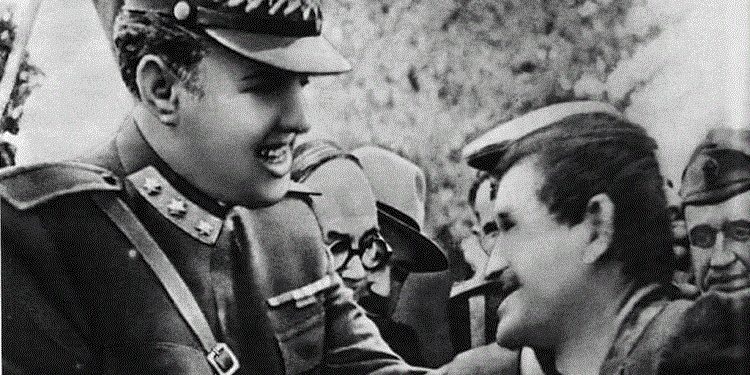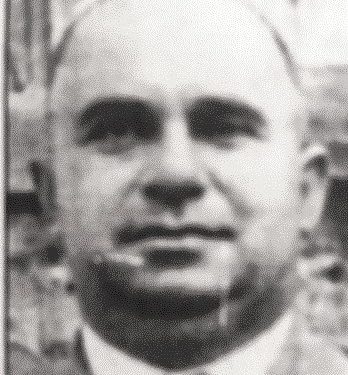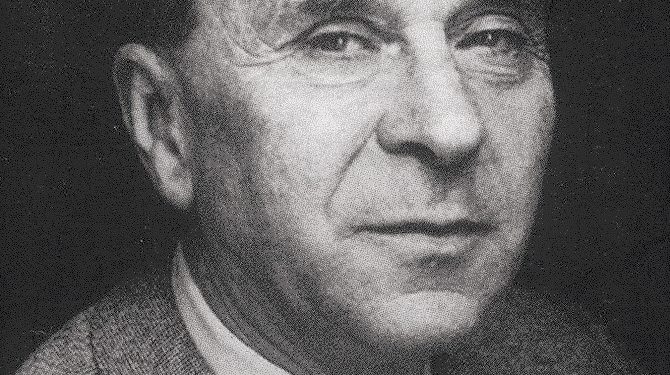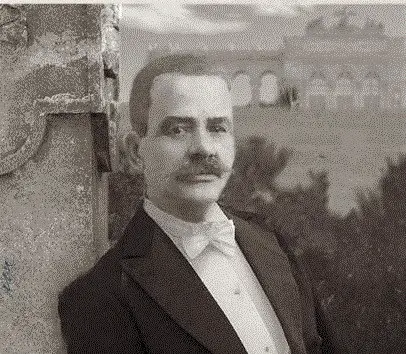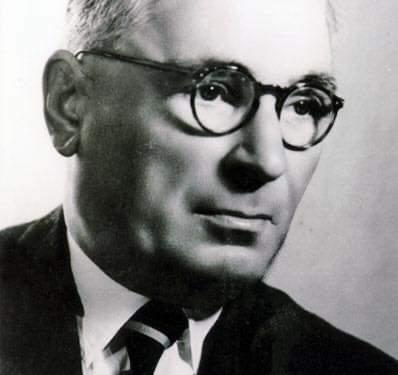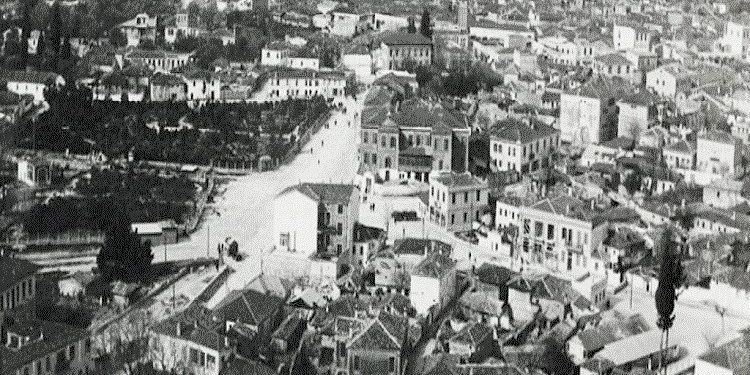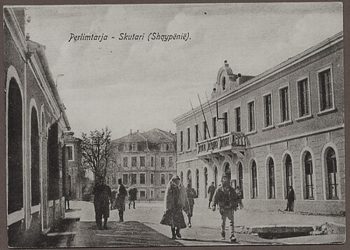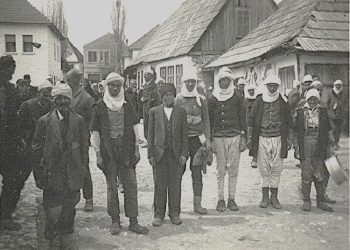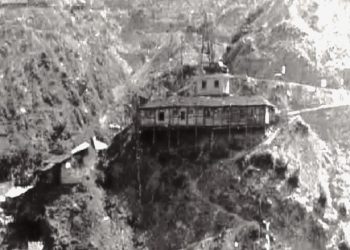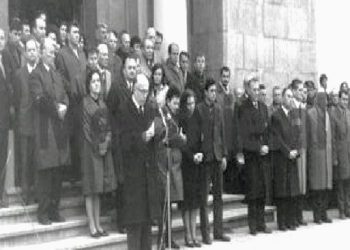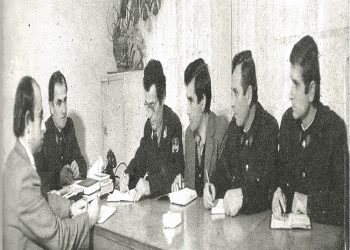The first part
Memorie.al / Seeing the many problems of property restitution and compensation as well as the many judicial processes that have developed after the 90s, which are still ongoing for the issues of properties confiscated from Albanian citizens by the communist regime, as well as for all those who have been considered as “collaborators of the Germans and Italians”, we are publishing some articles related to this issue. From the first data, it is established that many of the properties blocked by the communist regime, after the 90s, got new owners and did not end up with the owners and their heirs. These properties, real or movable, passed through the filters of forgeries and manipulations in the cadastral offices or in the offices of Property Return and Compensation. In this article, we are bringing the way the communist regime acted to seize assets for all persons accused of being “former collaborators of the invaders”, including those who publicly opposed the communist regime in power and suffered in prisons and exiles.
How was the sequestration of the assets and properties of opponents of the communist regime carried out in 1945?
The first confiscations of the communist regime and the steps to establish the legal basis. The process started on December 18, 1944 and continued for several consecutive years. Immediately after the coming to power of the Communist Party, Enver Hoxha’s government ordered the blocking and sequestration of all the assets of the “collaborators of the invaders”. In this sequestration process, political exponents who opposed the ruling party, Albanians who escaped abroad, or all foreign citizens who had carried out commercial activity in our country, before or during the Second World War, were also included. Thus began the process of the disappearance of private property in Albania, which was carried out in several stages.
The political process of seizures
Initially, the communist regime did not completely eradicate it, but dealt with the confiscation of the properties of its opponents, who at the time of the communists’ arrival in power, consisted of three categories: former rulers, officials or functionaries who were framed in the state structures, during the Second World War; former leaders of non-communist political formations, mainly the “National Front” and “Legality”; former head of state of Ahmet Zogut, unmixed with the war; ordinary opponents of the communist regime, without activity, evaluated as such (as opponents) by the political bodies charged with their verification.
In this period, the process of freezing assets began, for all citizens who fled abroad, as a sign of revolt against Enver Hoxha’s regime. Also, during the years 1945-1946, the process of verifying assets also began for foreign traders or entrepreneurs who had carried out their activity in Albania until 1945.
“War criminals”!
In the general case, the term “war criminal” was used for those who had been in the administration during the War, as well as those who had leaders of various non-communist political forces. Indeed, in most of the list of “war criminals”, you will find people who did not even know how to use weapons, while it is a fact that no political trial of the post-war years could prove any “crime war”. All accusations were and remained only political.
But the process, which faithfully followed the first steps of the sovietization of the country, was the one that dealt with the category of “criminals” and opponents of the regime. Later, nothing mattered, as confiscations were replaced by nationalizations. This general study brings, among other things, some examples, without assuming that they are all, to show concretely how this process went, not much covered in the press and media in general.
Seizure structures
Only a few days after the liberation of the country was announced, Enver Hoxha started his “revenge” against his political opponents, taking their movable and immovable assets. The first step was the creation of local commissions for property administration. The Ministry of Economy, on December 18, 1944, instructed the prefectures, that in order to study and administer the assets of the fugitives, commissions would be formed in each prefecture and sub-prefecture. They consisted of representatives of the National Liberation Army; Antifascist Youth; Guilds (farmers, etc.), loyalists of the Movement and, finally, jurists.
Drafting of reports
Political fugitives were considered, all the small and big functionaries, who had been in the service of the occupiers (“ballistas and people of Legality”), who are fugitives inside and outside the country. According to the instruction, “the commissions investigate and dictate all the assets of political fugitives, register and describe all these assets and summarize all their descriptions in separate reports for each case, which they present to the central commission”. The commissions took care of the preservation of assets.
The report had to contain: name, surname, place of residence, political activity, description of property, type of property (cultivated land, meadows, pastures, forests, waterways, vineyards, orchards, olive trees, grain mills, oil, agricultural buildings, deposits grain, livestock, machinery and tools), the description of this property (area, extent, type, roots, capacity, mills, their condition, size of buildings, etc.), location, how they were managed before, family status and refugees, political attitude, etc.
The commissions investigated and discovered “every act of fraud and speculation on these assets (false sales and purchases), as well as proposing the way of administration”! (AQSH, P.494, V.1945, D.453, sheets 2-3). That same day, the Minister of Economy, Medar Shtylla, sent a circular to the National Liberation Councils, through which they were instructed on the help they had to give to the Central Commission.
Law on confiscation of assets
Following these measures, the Presidency of the Anti-Fascist National Liberation Council (KANÇ), which had assumed the functions of a presidency, issued “Law” No. 40 dated January 14, 1945, “On the confiscation of private assets”, which were foreseen to be left to the Executive Committees? According to the “law”, the confiscation was decided by the court, with the sentence decision or by another authority designated by the special law and in case of non-appointment by a member of the leadership of KANÇ who was the chairman, a judge, (by the Ministry of Justice), an economist (from the Ministry of Economy), an agricultural specialist (from the Ministry of Agriculture), a financier (from the Ministry of Finance), a soldier (from the Ministry of War and National Defense) and a secretary from the commission ( Central State Archive, F.489, V.1945, D.45, sheets 5-7). On January 15, 1945, the “law” on the confiscation of the assets of political fugitives was issued (AQSH, P.490, V.1945, D.141, sheet 1).
Appointment of the commission
On April 24, 1945, the Presidency of the KANÇ Presidency announced that Gogo Nushi had been appointed chairman of the special commission (ibid. page 13). On April 19, 1945, the Central Commission for the study and administration of the assets of political fugitives presented the relevant report, complaining that; the local commissions had not done their duty and the members had gone to the base themselves. The commission, in repeated meetings, under the chairmanship of the Minister of Finance, submitted that the commission considered it reasonable to create a central office for the administration of agricultural assets at the Ministry of Agriculture.
This office would take care of the creation of agrarian offices in the districts that would deal with their administration. Urban assets (city houses, shops, mills, etc.) would be registered by the Ministry of Finance and administered directly by it as state assets. All relevant documents were marked with “VF-LP” (AQSH, P.494, V.1945, D.453, sheet 19). As part of the measures against “political opponents”, pension schemes were also blocked. On May 25, 1945, the Ministry of Finance ordered the confiscation of pensions, if there were persons who benefited from them (AQSH, P.505, V.1945, D.186, page 53). The secret order: “To confiscate all those who think against us”.
How were the confiscations of persons designated as “war criminals” carried out?
For the preparation of the legal framework, the entire mechanism that would lead to the blocking of the assets of persons accused as collaborators of the occupier, or who were against the regime, was compiled in the institutions of the People’s Assembly, the Council of Ministers, directed by Enver Hoxha, or even through other institutions. People’s courts were put into operation, which publicly declared “war criminals”. After the preliminary seizures, previously imposed, the long process of transcriptions of the assets in question began. Below we give some of the persons, declared “enemies of the people”, whose property was seized.
Ali Kalcyra
His property is confiscated, according to the decision of the Executive Committee of the Fier People’s Council, dated June 7, 1945, which, after receiving Letter No. 50, dated May 30, 1945, of the investigative commission for war criminals, according to which, “Ali Këlcyra was charged as a war criminal, as he was one of the exponents of the ‘National Front’, organized and directed the bashibozuku detachment, organized by killing, dishonoring and robbing the people”. The property of his wife, Dudush, is also confiscated.
-The real estate consisted of: 6 beams, 451 poles, 3944 rails, 476 codromas, 9 boards.
– Movable property: 6 shops, 9 building plots, 1032 dynym of agricultural land, 250 dynym of fields and lawns, 250 dynym of forest. Small house in Muçan. (AQSH, P.484, V.1946, D.464, pages 145-148).
It is said that Nafije Këlcyra (perhaps the second wife?) who came from a family of beylers and had 9 shops, had to be confiscated (AQSH, P.505, V.1945, D.513, sheets 249 – 250).
Bektash Cakrani
This property was confiscated on June 7, 1945. It was noted that the person had no real estate. There were movable assets: in Martino, Fierez 376 land and 160 dynym (AQSH, F.484, V.1945, D.464, and sheets 155-156). Kadri and Kujtim Cakrani are also included in the expropriation (sheets 411 – 414).
Nuredin and Xheladin Vlora
The relevant commission reported that their movable property consisted of: threshing machine with motor, corn machine, kandar.
The real estate consisted of: 1 two-story house, with 8 rooms (Levan’s command was located), 2 kitchens, granary, 120 olive roots, 700 tree roots in Frakull. – Agricultural land in Frakull, 2115 dynym uncultivated, 4080 dynym, 1000 dynym and 3000 dynym pasture, land in Červen, 1560 dynym and 510 dynym.
Ferras-Pasha, 466 dynym, 214 meadows, 60 dynym lawns, 100 forest. Motalli, 420 dynym, 182 dynym tea, 250 dynym lawn, etc. The properties registered on 6 pages were not found in the registers. (AQSH, P.494, V.1945, D.464, pages 158 – 163). On December 12, 1946, the local commission confiscated the property in Vlora (AQSH, P.505, V.1946, D.145, sheet 148).
Vizhdan Risilia
On July 7, 1945, Vizhdan Risilia, former prefect, was marked as a “collaborator of the Gestapo” and as an internee of 600 Volhonites. He had no movable property. The real estate consisted of a plot of land in the “Lirimi” neighborhood, 65 olive trees, 4 barracks with 16 rooms, 103 olive trees, an old vineyard in the Kardëllesh Neck, 48 olive trees. In Bestrovë, (Gropa e Guri) plot, 67 olive roots, on Stefos coast, plot, 43 olive roots, 1 plot, 54 olive roots, “Lirimi” Neighborhood, residential house and plot (AQSH, P.494, V. 1945, D.464, sheets 16-17). Adem and Enver Risilia are also included in the list.
Eqrem and Safa Vlora
Eqrem Vlora – former minister and brother of Safa Vlora, sons of Syrja Vlora, were among the people who were punished by the communist regime of the dictator Enver Hoxha. On July 7, 1945, in Vlora, the following were confiscated: hotel “Tirana” (two-story), 1 house with 9 rooms with 14 olive trees + garage, a house on the pier, 1 plot of land. The others are in the name of his father and his brothers Namik and Feri, which of course were seized later. Memorie.al
The next issue follows





